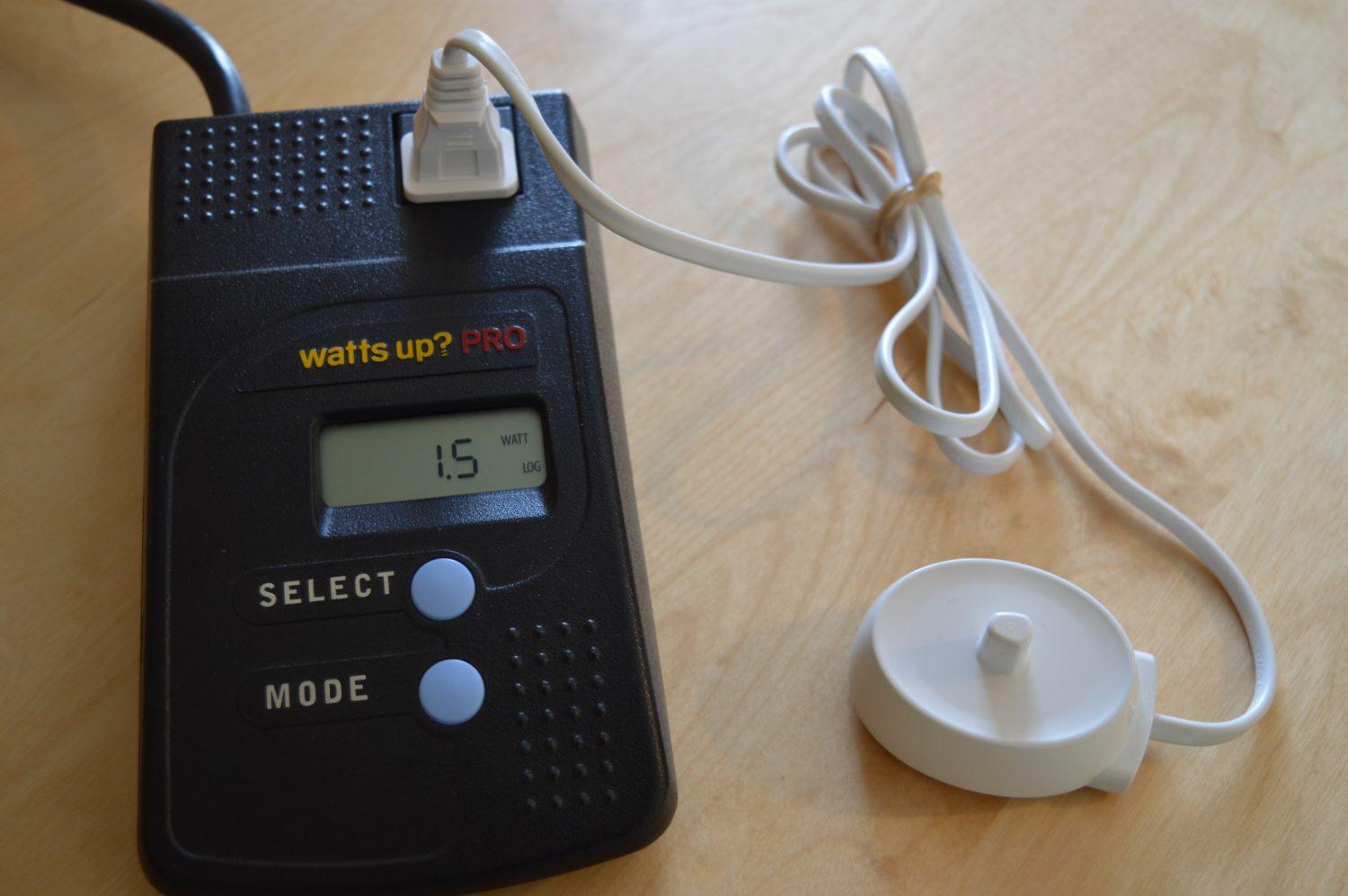
An electricity usage monitor can measure how much electricity an appliance, an electronic device, or charger uses when it’s on and off. Here it’s measuring a toothbrush charger.
Did you know that approximately half of your annual utility bill comes from heating and cooling your home?
Fortunately, in the spring and fall, you generally don’t have to heat or cool your home, so your overall utility bills will be lower compared to the summer and winter months. During these “shoulder seasons,” consider examining where the rest of your energy use comes from — that portion of your bill that does not include heating and cooling: your baseload. In most homes, this includes appliances, lighting, electronics, and water heating.
Our Technical Director and Building Auditor, Wilson Ratliff, recently inspected a home where the homeowner complained of high energy bills. “Sometimes people assume that their high utility bills are due to insulation issues or drafty windows, but it could be the result of the client having a high baseload,” said Wilson. After auditing the home, he found that the client had two empty freezers that were still plugged in and running and suggested the client turn them off and unplug them.
Even though newer ENERGY STAR® appliances like refrigerators, freezers, and clothes dryers are more energy efficient compared to 20 years ago, these appliances still use a lot of energy. In many cases, home occupants have offset some of the savings from energy efficient appliances by plugging in more electronic devices and leaving them plugged in.
Wilson suggests that clients do an inspection of their appliances and electronics. If an appliance or device is never used, unplug it. Why? Because some devices (e.g., computers, TVs, chargers) still draw some electricity even if they are turned off. This electrical draw is referred to as “vampire” or “phantom loads.” Even if these devices are only drawing a small amount of electricity, when added together with other devices around the house, it adds up to wasted energy and money.
“Think of electricity as water. You wouldn’t let a faucet run or drip if no one was using it. Energy is a valuable commodity and should be conserved just like water. When you conserve energy, you are also preventing more greenhouse gas emissions,” said Wilson.
If you don’t feel like unplugging your devices, you can use a “smart” powerstrip. These powerstrips have outlets that always have power and other outlets that will automatically cut power to the outlet when the electrical device goes in standby mode or is turned off.
Lighting is another contributor to baseload energy consumption. Wilson suggests replacing standard incandescent lightbulbs with LEDs for an 85% reduction in the cost to light your home. With the increase in popularity of LEDs, it’s becoming easier and more affordable to purchase them compared to just 5 years ago. They are now readily available from online retailers like 1000 Bulbs and Amazon, as well as local hardware and grocery stores.
Wilson also suggests examining your everyday devices and appliances. Some of your appliances might be inefficient and need upgrading. To see how much power these appliances and devices use, you can use an electricity usage monitor. You can purchase an electricity usage monitor online or check out one from the local Jefferson-Madison Regional Libraries.
To use this monitor, plug it into the wall and then plug in the electronic device that you want to measure into the monitor. The electricity usage monitor will tell you how much power the device uses while on and when you switch it off. Some electricity usage monitors will also translate that data into how much it costs per hour to power the device. You can also estimate energy usage of appliances and devices using an online resource like the one found at the US Energy Department.
Water heating for showers/baths, clothes washer, dishwasher, and faucets is another source of baseload energy consumption. Wilson suggests some simple changes like installing water-saving showerheads and aerators, insulating hot water pipes, and turning down the water heater to 120 degrees.
If you try these tips and still have a high baseload energy consumption, consider getting a home energy audit which can help isolate more complex issues.
This article first appeared in the Daily Progress.
